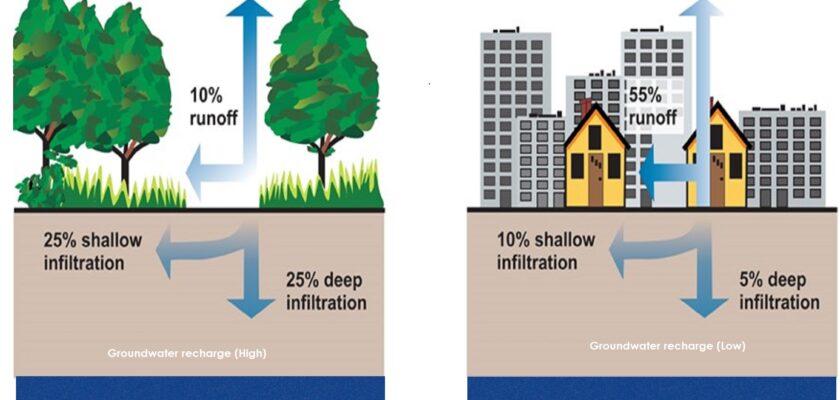Lagos state has witnessed rapid urbanization and a surge in real estate development, accompanied by a growing trend towards paving compound spaces with impermeable materials such as concrete, tiles, and asphalt. While this trend aligns with desires for modernity and ease of maintenance, it also has significant implications for water resources, especially flood in Lagos state, a city that already has a flat topography and many areas at or below sea level.
Aside from the effect of climate change, which is a leading discussion globally, there is need to examine some other causes of localized environmental challenges. Most of the built-up areas in the state are by nature, green vegetation. This vegetation helps in reducing flooding from rainfall through several mechanisms that include interception, absorption, retention and delay of surface runoff, and reducing flood peaks downstream.
Now that the whole vegetation covers that ensures the stability of the water cycle system is gone, and replaced with structures that prevent seamless percolation of rainwater through the soil layers, experiencing flooding in the city should not come as a surprise.
The shift from natural ground cover to concrete or asphalt surfaces and rooftops prevent rainwater from infiltrating into the soil. Instead of being absorbed, rainwater runs off these surfaces quickly, often into nearby drainage systems or canals. In Lagos, where drainage infrastructure is often inadequate or poorly maintained, this increased surface runoff contributing significantly to urban flooding during periods of heavy rainfall.
Not only that, the surfacing of house compounds with impermeable materials reduces the amount of water that can naturally recharge groundwater reservoirs, which a larger percentage of the citizen rely on for their water supply. Traditionally, rainwater would percolate through the soil, replenishing aquifers and maintaining a balance in the local water table. However, with more surfaces sealed off from absorption, less water infiltrates into the ground, which soon could lead to the issues of water scarcity.
The impact of these changes is particularly acute in low-lying areas and neighborhoods situated near natural water bodies or drainage channels. During the rainy season, the rapid runoff from impervious surfaces overwhelms existing drainage systems, leading to localized flooding that disrupts daily life, damages property, and poses risks to public health and safety.
Mitigation
Addressing the issue of flood in Lagos state exuberated by paved flooring and other impervious surfaces requires several approaches. Urban planning and development regulations can play a crucial role in promoting sustainable building practices that prioritize permeable materials for driveways, walkways, and other ground surfaces. Techniques such as permeable paving, green roofs, and rainwater harvesting systems, and retention ponds can also help mitigate the adverse effects of surface runoff by allowing for greater infiltration and storage of rainwater that will reduce flooding and improve groundwater recharge.
While the government has its own role, we as citizens, beyond our complaints and call to government officials, should not jettison our own through our action and inactions. We should endeavor to check some of the consequences of our desires in building houses and commit ourselves towards steps that will mitigate our suffering, especially as it regards flooding and avert environmental disaster.
Temitope Oluwabiyi, a Water Resources Manager and IT personnel writes from Lagos. temitopeonline@yahoo.com

